The size of your mattress is one of the most important decisions to make when picking out your ideal bed. And you’re not short of options – there is a huge variety of different sizes, some very common and some more specialised.
To choose your ideal mattress, it’s important to consider three things. The first is the size of the people using the bed.
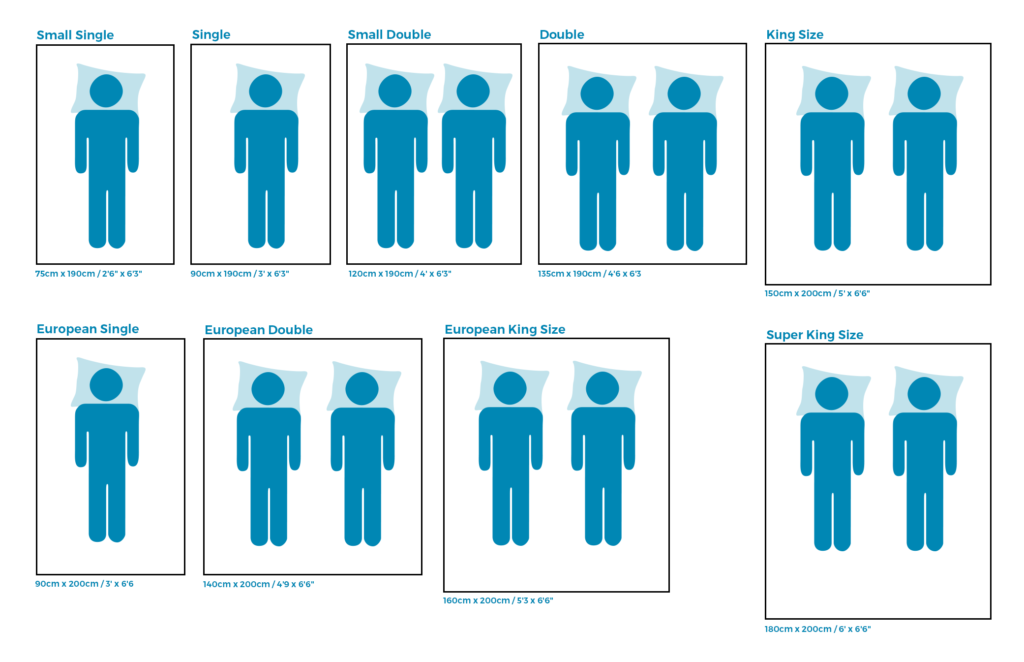
Who Will Be Sleeping In The Bed?
- Single children will likely be comfortable in a small single or standard single.
- Single adults will be better suited to a single, European single, small double or double bed.
- For adults sharing a bed, the best options are a double, European double or king size.
- For two adults sharing alongside potential children or pets, a king or super king size bed is recommended.
The second important factor in choosing a mattress size is the amount of moving these people will commonly be doing in their sleep (more on that below).
And the third factor is the size of the room the bed is going into. A perfect mattress choice will maximise both sleeping space and room space:
What Size Is The Room?
- It’s important to factor in enough space in the room around the bed on all sides, particularly for those sharing. To fit a king size bed, a room should be at least 10 square feet.
- It’s also worth bearing in mind the shape of your bedroom. A longer bed may look more proportional in a longer, narrower space, for example.
A mattress is recommended to be around 10 cm longer than the tallest person sleeping in it. Width-wise, you want to be able to put both hands behind your head while lying on your back without your elbows touching either the edge of the bed, or the person you’re sharing with.
It’s also worth considering how common the mattress you’re buying is. Common bed sizes (standard single, double and king size) are the easiest to find duvets and bed sheets for. If you want the biggest choice of sheets, it may be worth sticking to a more standard size.
Small Single Size Bed Dimensions
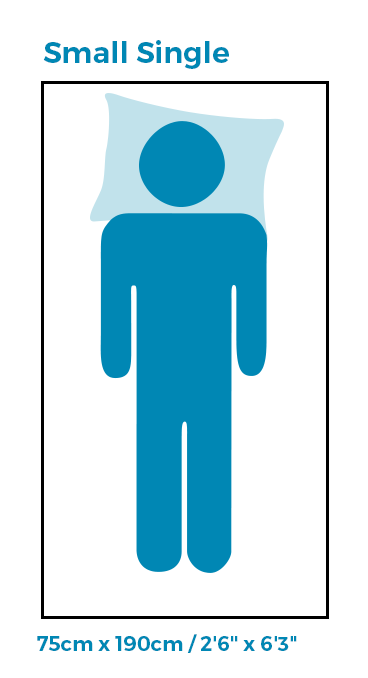
75cm x 190cm / 2’6″ x 6’3″
A small single is a bed of standard single length, but 15 cm narrower. This makes it the smallest bed option on the market, which comes with benefits and disadvantages,
Pros: Fits into very small spaces, while still providing a usually adequate amount of room.
Cons: A small sleep space, will not be suitable for those with tall or big frames. They can also be difficult to find correctly sized bedding for.
Recommended For: Spare bedrooms where space is at a premium. Also good for kids, and can work as a transition bed between a cot and a bigger bed.
Single Size Bed Dimensions
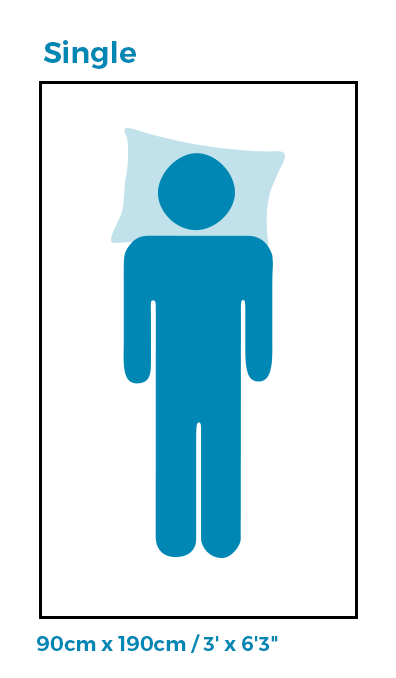
90cm x 190cm / 3′ x 6’3″
Standard fare for children or single sleepers, this bed is designed to be adequately comfortable for most solo sleepers while still not taking up excessive room space.
Pros: Fits into small spaces, and will provide adequate space for most people. Very easy to find bedding for.
Cons: Not suitable for sharing. Particularly larger framed people or those who move around a lot in their sleep may find the space inadequate.
Recommended For: Those who sleep alone and have a smaller bedroom. Single beds are suitable for both kids and adults, and are the standard size for bunk beds.
European Single Size Bed Dimensions
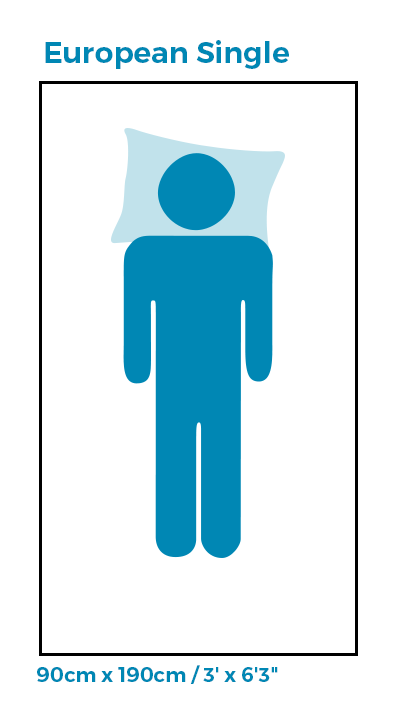
90cm x 200cm / 3′ x 6’6
Like a standard single with an extra 10 cm of length, this is an ideal option for solo sleepers who are of above average height. If you’re buying your single bed from IKEA or another European retailer, this is the single bed you’ll be getting.
Pros: Fits into small spaces. Has extra length, making them ideal for taller people who don’t share a bed.
Cons: Can be difficult to find bedding for. May be unnecessarily long for those of average frame, and thus take up unnecessary room space.
Recommended For: Those with tall frames who sleep alone and have a smaller bedroom.
Small Double Size Bed Dimensions
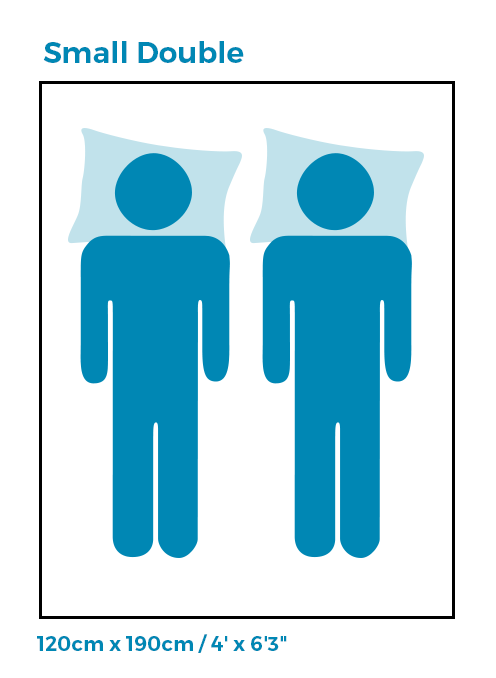
120cm x 190cm / 4′ x 6’3″
Designed for rooms where a double bed is just not feasible, a small double offers a sleeping space for two but is 15cm narrower than a standard double.
Pros: Provides just enough room for two without taking up so much room space.
Cons: Can feel quite cramped, particularly if either person is a more restless sleeper. Can be more difficult to find bedding for.
Recommended For: Use in spare bedrooms, for occasional use by couples. Can also be useful for couples with a particularly narrow room who don’t mind being very close by night. It’s worth noting that sometimes small doubles are also referred to as “three quarter beds.”
Double Size Bed Dimensions
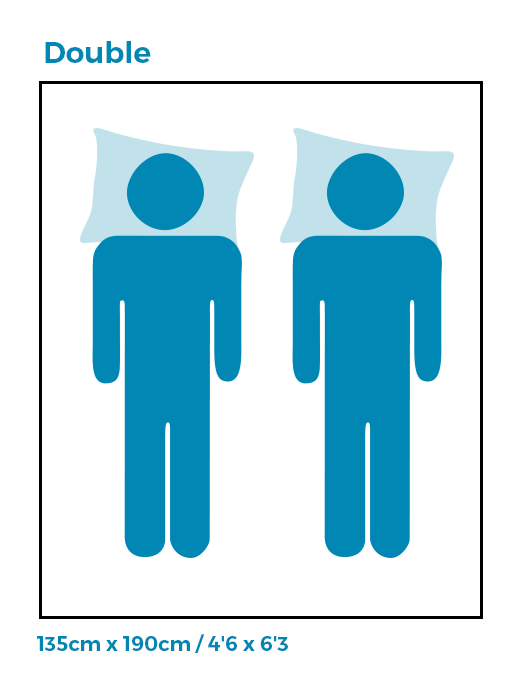
135cm x 190cm / 4’6 x 6’3
The most common bed type, this is designed to be the best option for those who wish to share a bed comfortably but don’t want their bedroom to seem cramped.
Pros: Comfortable space for two people. Very easy to find bedding for.
Cons: Not ideal for partnerships of two people with larger frames. Can dominate a particularly small bedroom.
Recommended For: Average sized couple with average sized bedrooms.
European Double Size Bed Dimensions
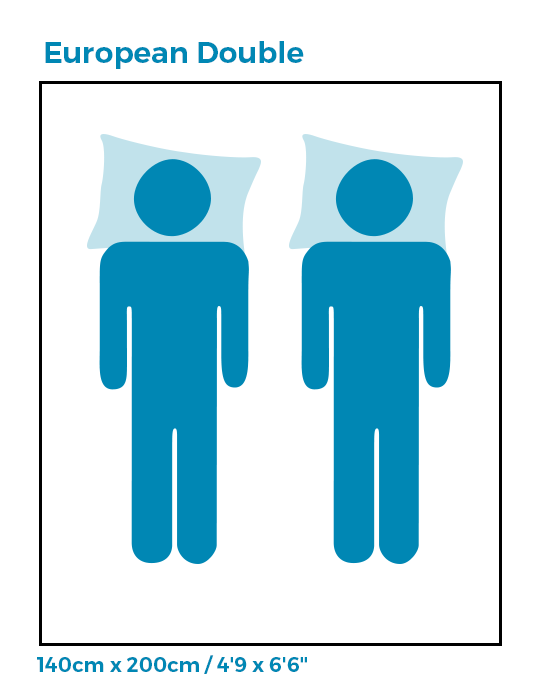
140cm x 200cm / 4’9 x 6’6″
This option is slightly longer and wider than a standard double. Again, it’s worth bearing in mind that if you buy your double from a European store, this is what you’ll be getting – and that can ake a big difference when it comes to bedsheets.
Pros: Provides more space and comfort, particularly in terms of length.
Cons: Can be difficult to find bedding for.
Recommended For: Couple where one or both are particularly tall.
King Size Size Bed Dimensions

150cm x 200cm / 5′ x 6’6″
This is 15 cm wider and 10 cm longer than a standard double bed, giving it a luxurious, spacious feel. It’s a good option for couples who value comfort by night, particularly if they have a fairly well sized bedroom.
Pros: Only takes up an extra foot of room space, but feels much larger when in bed. Fairly easy to buy bedding for.
Cons: Will dominate smaller and sometimes even average sized rooms.
Recommended For: Couples who value room whilst sleeping. Those with larger bedrooms.
European King Size Bed Dimensions

160cm x 200cm / 5’3 x 6’6″
This option adds another 10 cm to the width of a king size bed, making it even more comfortable. Again, you should be cognisant when purchasing from European stores, because buying one by mistake can make buying bed sheets more tricky.
Pros: A good compromise between a king size and super king size.
Cons: Can appear take up a lot of space. Can be difficult to buy bedding for.
Recommended For: Those who want a large amount of sleep space but don’t want to go so far as a super king size bed.
Super King Size Bed Dimensions
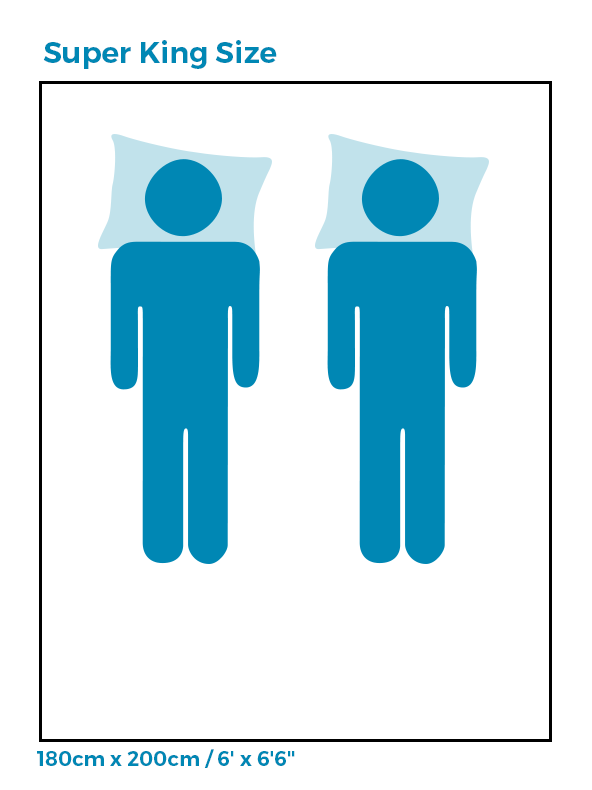
180cm x 200cm / 6′ x 6’6″
This is the very biggest option, unless you want to purchase a bespoke bed. It provides the ultimate in spaciousness and comfort, but this obviously comes at the cost of bedroom space.
Pros: Provides a huge amount of sleeping space.
Cons: Not suitable for most average sized bedrooms.
Recommended For: Those who truly value a large and comfortable sleeping space. Couples with larger frames, or who both move around a lot in their sleep. Those with very large bedrooms. Super king size beds are also good for those with families or pets who like to pile into the bed.